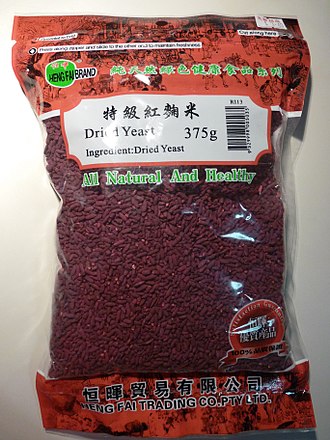RexlerLepp
Member
While this thread hasn't had any real activity in about a year, I am curious if there has been any updates in this area. Has anyone had any success? What was their process? Recipes?

While this thread hasn't had any real activity in about a year, I am curious if there has been any updates in this area. Has anyone had any success? What was their process? Recipes?










![Craft A Brew - Safale S-04 Dry Yeast - Fermentis - English Ale Dry Yeast - For English and American Ales and Hard Apple Ciders - Ingredients for Home Brewing - Beer Making Supplies - [1 Pack]](https://m.media-amazon.com/images/I/41fVGNh6JfL._SL500_.jpg)


I brewed this recipe last wednesday. Brewday conclusions: I believe one needs a much larger proportion of red rice in order to get that very red colour. Perhaps as much as 50%. I also think that such a large proportion may result in problems such as stuck mash.
The wort, however, got a lot of flavour components from the red rice, and I believe that the beer will turn out very interesting.
I made a relatively large starter with the sake yeast, and it appears that it does not make for a very reddish colour in the beer.
I was looking for some info on monascus purpureus, stumbled across this. If I read that correctly, it was cultured successfully in a liquid medium instead of on a solid one. Solid medium growth being more common when making rice wine.Glad to see some activity on this one again! Found this one a couple years ago when I first tried the Nest's Red Rice Ale.
I just stumbled onto the "Making Traditional Rice Wine..." thread and it got me interested in this again. I'm only on page 16...out of over 160!... and wondering about the possibility of combining the normal beer brewing process with a little of the wine process, but using red rice yeast with (or instead of) the yeast balls they use for the wine.
Anyway, I've got quite a few more pages to go on the wine thread, but getting excited about trying this!



A bit late to the party but do you have an update on this attempt? I'm planning on doing basically the same thing to avoid souring instead of adding it to the fermentation like sake. Any koji character left after boiling or just extra enzymes for the mash?Just did buy some red koji. Will convert 50% of the grain bill as rice with it, will add it to the mash with Pilsener or pale malt and then afterwards will ferment "normal" with a beer yeast. Will create a new thread for this.
Didn't do it at the end, made some red rice wine with the red yeast rice. I doubt that it has conversion potential tbh.A bit late to the party but do you have an update on this attempt? I'm planning on doing basically the same thing to avoid souring instead of adding it to the fermentation like sake. Any koji character left after boiling or just extra enzymes for the mash?